#potty training yorkies
Text
1 year of Quimby!!!!!!
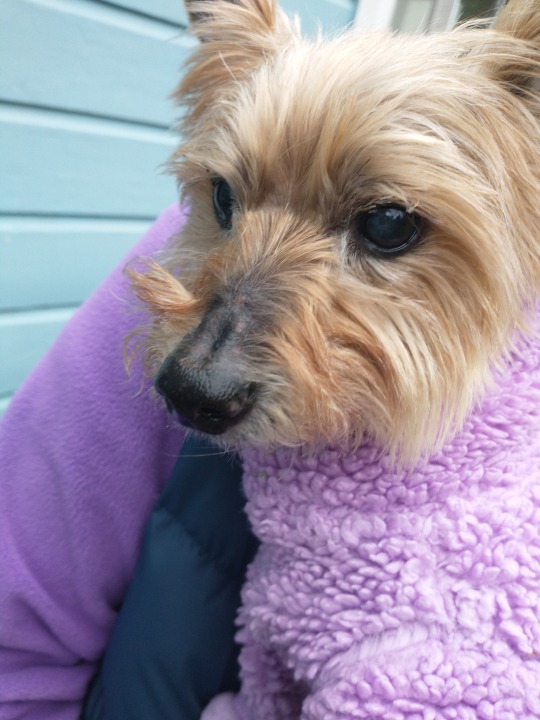

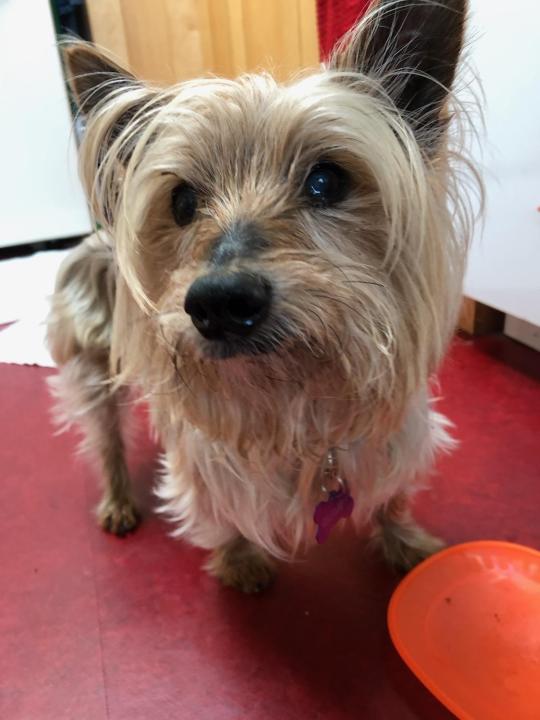
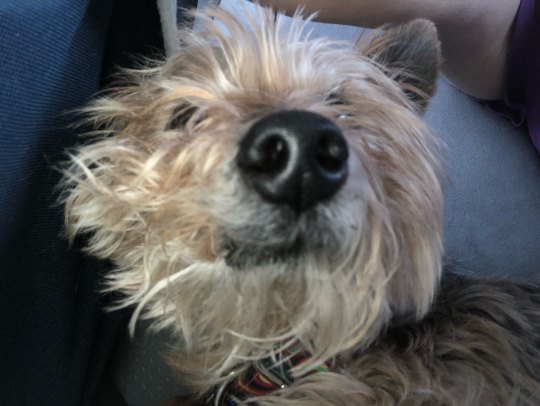
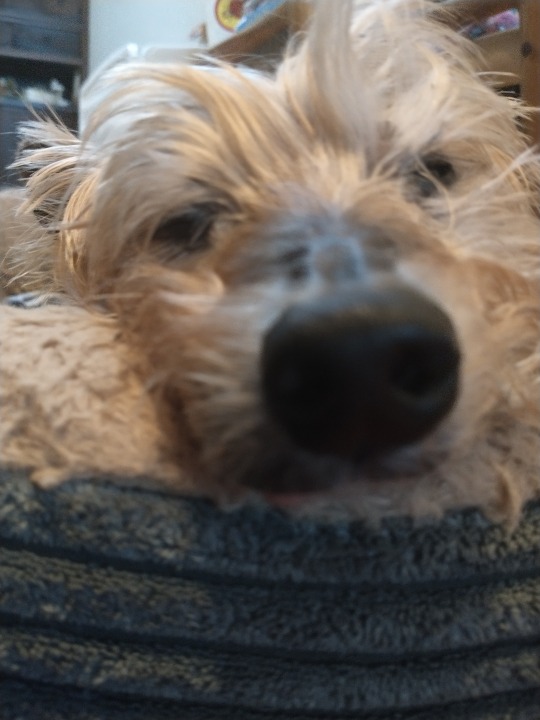
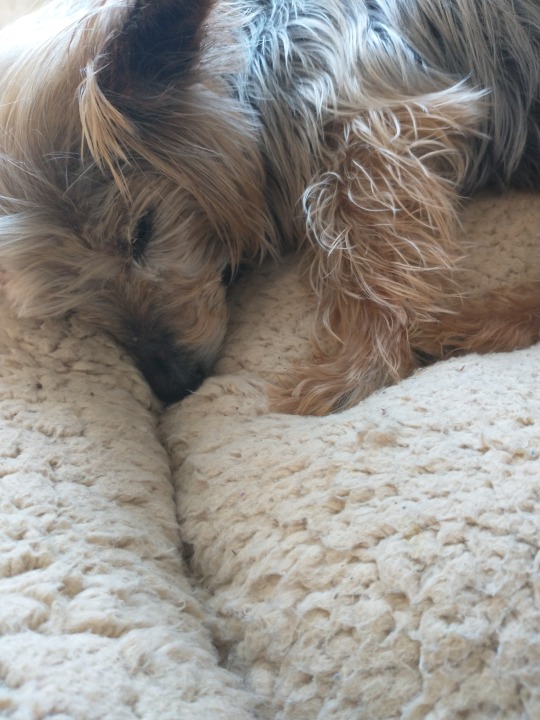

Quimby was found by animal control on the streets. He was then given to a rescue and then to me and me famil. When we first got him, we quickly realized he had never been trained in any way at any point in his life. 1 year later, and he still can't do shit ♥️ Love this little menace. His ass is 14!!!!!!!
#dogblr#quimby#yorkshire terrier#yorkie#terrier#We have tried to potty train and give him recall and shot but he's not good at catching onto think and potentially has dementia
18 notes
·
View notes
Note
I meant to ask about the pets too FAWK GO FIND THE PET QUESTION AND ANSWER IT GODDAMNIT
LOL i was like ALL I HAVE DONE IS TRAUMA DUMPED
15: Have any pets? YES I DO I HAVE FOUR NOW JESUUUUUUU CRISTO.
Deano. My boy my first born my little bastard. My full sized yorkie with floppy ears and he stinks and he chews on his feet and has chronic ear problems and is my rotton soldier and is currently wearing Christmas pajamas and almost snoozing near me on the couch/ottoman/blanket. He is also keeping a wary eye on the kitten, who loves him, and who he wants nothing to do with. He turned 8 in October and he's shaggy and needs a haircut and another bath and he has to eat prescription food to prevent developing more bladder stones because THAT was a thing goddamn. He loves adult humans but anyone and anything else is his enemy and he must protect from them. He is so spoiled and so cute and so whiny and honestly he deserves better than I can give him and I hold him and cryyyyyyy every time I watch a sad animal video.
Wimby, Kate's cat, mine by proxy. He's the old man, we call him Peepaw Wimby since we got the kitten because he's 10. Currently curled up at the top of his living room cat tree, nose tucked in his paws. He mostly doesn't like strangers but he liked me right away, and by "liked me" I mean he let me pet him and gave me bumps with his head and screamed at me a lot. He still does this. He screm. He takes smelly shits and acts like a moody teenager; whenever something happens that he doesn't like he runs upstairs and will loudly complain for like 10 minutes. Now that there are 2 other cats in the house he's gotten more brazen with bad food manners and will just stick a nose or a paw in Kate's food and he debates a LONG time about jumping up on the kitchen counters before I can convince him to be a good boy and not do that. The kitten harasses him constantly, fearlessly, and he hates it, but then we find him being nice to her when no one's around. That's when moody teenager comes out because he gets embarrassed. He is enjoying eating the kitten's food.
Larry. A stray cat that wandered around near our house that just like ... decided she lived here now. She has a quiet raspy meow unless she's really distressed so Kate named her Larry, short for Laryngitis ... then we figured out she was a girl. She's a tortie and we can't litter train her, she'll piss anywhere but a litter box, so we just let her go potty outside like a dog because she always comes home. She's gotten REAL fat because she eats cat food here in the house and then hunts when she's outside so now she's a chonker. The kitten makes her angry and she was mad at me for like a month but finally she's back to wanting my affection and snuggles. She's actually really snuggly and very friendly. I don't know where she is at the moment, she's out of eyesight so probably in the spare bedroom on the bed or upstairs on the couch under the window. I really want to get her to wear a collar so we can put an air tag or a tile on her or something so we know where she goes when she's outside since litter training her seems out of the question. I really wish we could just keep her inside 24/7 because I don't want her getting hit or attacked by a coyote or local dog.
Bizzy (government name=Important Business). Our newest pack member. She is a terror and a menace and she is so snuggly and sweet and maddening and only 5 months old. She is missing an eye and sneezes all the time because we adopted her right as she was getting over a respiratory infection and every time I find or wipe up a cat booger I wanna barf. She was kind of an impulse adoption, because she just happened to be in the local dog bakery downtown when we went in to visit for the first time. Two days later she was home. She came litter box trained but she keeps stepping in her poop in the box and I'm like PLEASE I'M TIRED OF WIPING POOP OFF YOUR FEET but her poops are touchy because of all the meds she was on. She's curled up between Deano and me on the ottoman right now, snoozing a little because she had a big day what with us vacuuming and Kate's aunt and uncle coming over. She is FEARLESS, even when the other three animals are clearly telling her to fuck right the hell off. She likes to climb into the fridge and sleep around your neck like a scarf. She has a little black patch on her chin like a goatee. We love her.
AND THOSE ARE OUR PETS. Leaving out the chicken Nancy that adopted us before she passed away and my fish that I had a decade ago that I loved like a child lmao.
ILU KRISSSSS
2 notes
·
View notes
Text
NOTE TO SELF: Airhorns don’t work on deaf dogs!
Last night and this morning we were charged by the same dog. The dog (an adolescent bully-breed) has excitement reactivity. TBH idc it was barking & lunging at us from a distance. Mandana can handle most crazy dog interactions if there is enough distance. However, in an effort to prove the dogs friendliness the guy walked straight at us saying “he’s friendly, can they play” as the dog was lunging at us. The owner finally moved away when I told him “we don’t want to meet” (he really should have asked BEFORE cornering us in the dark). The next morning the same dog with a different person lunged at us again as they were turning a building. Luckily this person left immediately and didn’t try to force a meeting.
When the first encounter happened, Mandana was ok for a while but as they got closer she ultimately reacted. She also has excitement reactivity and having a dog pulling & barking at her while she was trying to potty in the dark was enough to trigger her to bark & pull in return. It’s frustrating bc we have gone sooo long without her reacting to excited dogs, but after this dog lunged at us two days in a row her her tolerance has gone down a bit.
This afternoon I took her for a short scooter run with her by my side on a collar/leash. An old Yorkie broke through his invisible fence and crossed four lanes of traffic to get at us. It gave me enough time to get the airhorn out but I quickly discovered the dog was deaf and didn’t care I was blasting a horn in his face multiple times. The owner was inadequate at retrieving the dog (just kept yelling at it from across the four lanes and didn’t try to catch the thing as it lunged at us). When the airhorn was dead i threw it at the dog and reached for my stun gun. I was really hoping I wouldn’t have to use it on such a small dog but that’s when the owner finally decided they would come get the dog afterall.
After they left, I took a moment to collect myself. I gave Mandana some water and treats and tried to turn it into a more positive experience. She recovered very quickly and was ready to go home.
In the moment, I made the decision to wrap my arms around Mandana’s neck to hold her back while I tried to manage the little dog. I knew this would escalate her behavior and it did. She pushed towards the dog but not with much power and she let out a low bark. I could tell she was not happy. She was letting me handle it but was ready to step in if the dog attacked. I could have tried to get her to sit which is what I normally do to prevent a reaction but in this circumstance it would have put us both at more risk. I didn’t want this little aggressive dog to get between us, so I kept her close to my hip in a hug so I could funnel the little dog (who was zoned in on her) towards me instead of having it dodge between us. I think I made the right decision in that circumstance and although I know it worsened her reactivity for now I imagine it was a much better outcome than if the yorkie had actually attacked her.
I haven’t been able to do training around other dogs lately bc that’s a lot of pressure to put on a sick dog but now that she is feeling better it’s back at the top of my priorities. I also need to reconsider the tools I use for dog attacks and make sure I’m able to cycle through them quickly if one or two aren’t working in the moment.
#belgian malinois#2 years#service dog in training#excitement reactivity#reactivity#off leash dogs#service dogblr#dogblr#positive reinforcement#scootering#dog encounters
8 notes
·
View notes
Text
about this post and this post
i loveee reading everyone's ideas about a dog that would suit kiyoomi and i just wanted to reply to some of them in the tags, i love you all(>‿‿<)♡
@writingbymoonlight
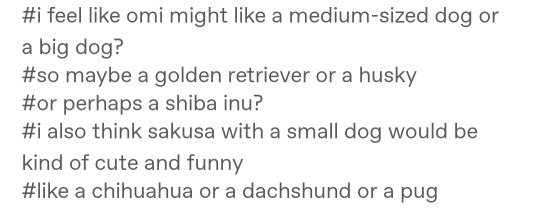
LUNA! my first thought was also a shiba inu! they just seem like they have matching personalities with omi.... deceivingly cute when they are actually quite sassy LOL
PLEASE omi with a tiny dog😭😭😭 imagine him walking around with the dog in his arms looking like the "don't talk to me or my son ever again" meme ahahaha
@epkatn

oh gosh sakusa and an american eskimo dog would look like ROYALTY, they would be turning heads everytime they go out,, everyone will stop and stare. i don't make the rules.
not a husky reminding him of atsumu and bokuto 😭 it would be a very talkative one who howls and whines a lot and ik omi would literally talk right back to the dog
SAKUSA AND CORGI! the image is so adorable🥺 i can see the dog wanting to curl up with omi to sleep and at first omi is like, strictly no dogs in the bedroom! but eventually caves for the puppy eyes💖 everytime i see a corgi i can't stop staring at it because like, all of its proportions look so wrong - big ears, long body, tiny legs, fluffy butt??? but they look so cute?!?
special mention @oooohno and our previous conversation


LOOK AT THIS!!! LOOK AT NANA'S BIG BRAIN WITH THE DALMATIAN!!!! I AM STILL REELING AT THE THOUGHT I WILL NEVER GET OVER THIS!!!!!
@icedhoneyy

omi and a little yorkie in a tote bag please😭 i'm thinking of the movie Beverly Hill's Chihuahua and imagining THAT is the life omi's dog is living (without the dognapping part ofc, omi would never let that happen)
yes i agree, adult dogs need a lot of love too! but i so want to see omi training a puppy, teaching it tricks, potty training, and how he'd react to the adorable puppy shenanigans 😭
special mention @ohtokki too bcs this is adorable and yes to the 2hr presentation,, there will be no bathroom breaks

υ´・ﻌ・`υ
in conclusion: everyone expects omi to have a medium to big sized dog, but omi with a tiny dog would be very entertaining
#thank you for coming to my ted talk#LMAO thank you everyone for feeding my puppy fever#i just love dog dad!omi ;(#[memories]
10 notes
·
View notes
Text

How to Potty Train a Teacup Yorkie: A Complete Guide http://dlvr.it/T233QC
0 notes
Text
Are Yorkies Easy to Potty Train? A Comprehensive Guide to Training Your Yorkshire Terrier
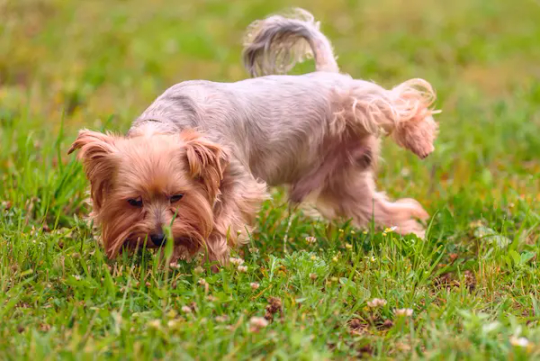
Yorkshire terriers, or Yorkies, are one of the most popular small dog breeds in the world. They are known for their adorable looks, loyalty, and affectionate nature. However, one common question that many potential owners have is whether Yorkies are easy to potty train. In this article, we will explore the different aspects of Yorkie potty training and provide you with the knowledge and tools to help you successfully train your furry friend.
Understanding Yorkies is the first step in potty training them. Yorkies are small dogs that are known for their stubbornness and independent nature. They are also known to have small bladders, which makes them prone to accidents. However, with the right training, they can be taught to go potty at the right time and place. In this article, we will cover the basics of potty training, the challenges you may face, and the tools and techniques you can use to make the process easier.
Key Takeaways
- Yorkies are small dogs that can be trained to go potty at the right time and place.
- Potty training a Yorkie can be challenging due to their stubbornness and small bladders.
- With the right tools and techniques, you can successfully potty train your Yorkie.
Understanding Yorkies
PlayHow Should You Potty Train a Yorkshire Terrier?
When it comes to potty training a Yorkie, it's important to understand the breed's temperament and personality. Yorkies, or Yorkshire Terriers, are small in size but big in personality. They are active, affectionate, and love to be around their owners.
Yorkies have a reputation for being difficult to potty train, but this is not always the case. In fact, with the right training and patience, Yorkies can be successfully potty trained.
One thing to keep in mind is that Yorkies have a small bladder, so they may need to go outside more frequently than larger breeds. It's important to establish a consistent routine for taking them outside to go potty. This can include taking them out first thing in the morning, after meals, and before bedtime.
Another thing to keep in mind is that Yorkies respond well to positive reinforcement. This means rewarding them when they go potty outside, rather than punishing them when they have accidents inside. This can be done with treats, praise, or a favorite toy.
Overall, understanding the unique characteristics of Yorkies can help with potty training and create a strong bond between you and your furry companion.
Basics of Potty Training
Potty training is one of the most important training exercises for any dog, and Yorkies are no exception. It is important to establish a routine and stick to it consistently. Consistency is key to success when it comes to potty training.
When potty training a Yorkie, it is important to choose a designated spot in the yard or inside the house where the dog can relieve itself. We recommend using a crate or a small enclosed area to limit the puppy's access to the rest of the house. This will help the puppy understand that the designated spot is the only place to do its business.
It is also important to establish a feeding routine. Feeding the puppy at regular intervals will help establish a regular potty routine. We recommend feeding the puppy three to four small meals a day at regular intervals. This will help the puppy establish a regular potty routine and make it easier for you to predict when it will need to go.
Repetition is key to success when it comes to potty training. We recommend taking the puppy to the designated spot every two to three hours during the day. This will help the puppy establish a routine and make it easier for you to predict when it will need to go.
In addition to taking the puppy to the designated spot regularly, it is important to praise and reward the puppy when it successfully relieves itself in the designated spot. Positive reinforcement is a powerful tool in puppy training, and it will help the puppy understand that it is doing the right thing.
In conclusion, potty training a Yorkie takes time, patience, and consistency. Establishing a routine, sticking to it, and rewarding the puppy for good behavior are the keys to success. With the right approach, potty training a Yorkie can be a relatively easy and stress-free experience for both the puppy and its owner.
Challenges in Potty Training Yorkies
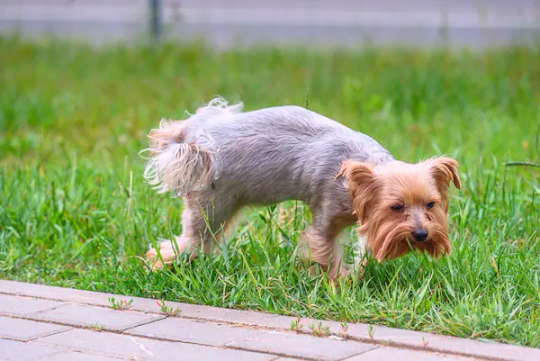
Potty training Yorkies can be challenging due to their small bladder size and tendency to get distracted easily. While Yorkies are intelligent dogs and can learn quickly, they require consistent and patient training to master potty training.
One of the biggest challenges in potty training Yorkies is their small bladder size. Yorkies have a small bladder and need to go out frequently. Failure to provide them with enough opportunities to eliminate can lead to accidents. As a result, it is essential to establish a consistent routine and take them out frequently, especially after meals, playtime, and naps.
Another challenge in potty training Yorkies is their tendency to get distracted easily. Yorkies are curious dogs and can easily get sidetracked by scents, sounds, and sights. As a result, it is crucial to keep them focused on the task at hand and avoid distractions. One way to do this is to take them to a designated potty spot and avoid playing or interacting with them until they have eliminated.
Inconsistent routines can also pose a challenge in potty training Yorkies. Yorkies thrive on routine and need consistency to learn. Deviating from the established routine can confuse them and make it harder for them to learn. As a result, it is essential to establish a consistent routine and stick to it.
Lastly, marking behavior can also be a challenge in potty training Yorkies. Marking behavior is when a dog urinates to mark their territory. Yorkies are known for their marking behavior, and it can be challenging to train them to eliminate only in designated areas. One way to address this issue is to use positive reinforcement and reward them when they eliminate in the designated spot.
In conclusion, potty training Yorkies can be challenging, but with patience, consistency, and positive reinforcement, it is possible to train them successfully. By addressing the challenges mentioned above, we can help our furry friends master potty training and avoid accidents in the house.
Tools for Potty Training
When it comes to potty training your Yorkie, there are a variety of tools that can be helpful. We recommend using a combination of these tools to help your puppy learn where and when to go potty.
Crate Training
Crate training can be a highly effective tool for potty training your Yorkie. Dogs naturally want to keep their living space clean, so a properly sized crate can help prevent accidents indoors. Be sure to choose a crate that is the right size for your puppy, and make it a comfortable and inviting space with soft bedding and toys.
Playpen
A playpen can also be a useful tool for potty training your Yorkie. It gives your puppy a safe space to play and explore, while also keeping them contained and preventing accidents in the rest of your home. Be sure to include a designated potty area within the playpen, such as a pee pad or puppy pad.
Leash and Harness
Using a leash and harness can help you keep your Yorkie close and under control when you take them outside to go potty. It also helps to establish a routine and signal to your dog that it's time to go potty. Be sure to choose a harness that fits well and is comfortable for your puppy to wear.
Pee Pads
Pee pads can be a helpful tool for potty training your Yorkie, especially if you live in an apartment or don't have easy access to a yard. Place the pee pad in a designated potty area, and be sure to praise and reward your puppy when they use it.
Clicker and Timer
Using a clicker and timer can help you establish a consistent routine and reinforce good potty training behavior. Use the clicker to mark when your puppy goes potty in the designated area, and set a timer to remind you to take your puppy outside at regular intervals. Be sure to praise and reward your puppy each time they go potty in the designated area.
Overall, potty training your Yorkie takes patience, consistency, and a variety of tools and techniques. With the right approach, your puppy can learn to go potty in the designated area and become a well-trained and well-behaved member of your family.
Effective Techniques for Yorkie Potty Training
Potty training a Yorkie can be a challenge, but with the right techniques, it can be a rewarding experience. We have found that positive reinforcement is the most effective training technique for Yorkies. This means rewarding your Yorkie for good behavior, rather than punishing them for bad behavior.
One way to use positive reinforcement is by giving your Yorkie treats when they go potty outside. This helps them associate going potty outside with something positive and reinforces the behavior. We recommend using small, soft treats that your Yorkie can easily chew and swallow.
In addition to treats, verbal praise can also be effective. When your Yorkie goes potty outside, use a command word such as "go potty" or "do your business". When they successfully go potty, use verbal praise such as "good job" or "good boy/girl". This helps them associate the command word with the behavior and reinforces the positive behavior.
Consistency is also key when it comes to potty training. Stick to a regular schedule for feeding and going outside. Take your Yorkie outside first thing in the morning, after meals, and before bedtime. This helps them establish a routine and makes it easier for them to understand when it's time to go potty.
Lastly, it's important to be patient and consistent with your training techniques. Yorkies can be stubborn, so it may take some time for them to understand what you want them to do. But with patience and consistency, you can successfully potty train your Yorkie.
Addressing Accidents
When it comes to potty training a Yorkie, accidents are inevitable. It's important to remember that accidents are a natural part of the process and should not be punished. Punishing your Yorkie for having an accident can actually be counterproductive and may lead to anxiety and fear.
Instead, we recommend using positive reinforcement to encourage good behavior. When your Yorkie goes potty outside or on their designated potty pad, be sure to praise them and offer a treat. This will help them understand that going potty in the right place is a good thing.
When accidents do happen, it's important to clean them up properly. We recommend using an enzymatic cleaner to eliminate any odors. This will help prevent your Yorkie from going potty in the same spot again.
It's also important to be patient during the potty training process. Yorkies are small dogs with small bladders, so they may need to go potty more frequently than larger breeds. Stick to a consistent schedule and be prepared to take your Yorkie outside or to their potty pad frequently.
In summary, accidents are a natural part of potty training a Yorkie. Use positive reinforcement, clean up accidents properly, and be patient during the process. With time and consistency, your Yorkie will become fully potty trained.
Indoor Vs Outdoor Training
When it comes to potty training Yorkies, one of the most common questions is whether to train them indoors or outdoors. The answer to this question depends on various factors, such as your living situation and your puppy's lifestyle.
Indoor Training
Indoor training involves using puppy pads or litter boxes to train your Yorkie to go potty inside. This method is ideal for people who live in apartments or condos or those who have limited access to the outdoors. Indoor training is also suitable for people who live in areas with extreme weather conditions, such as heavy rain or snow.
To start indoor training, choose a designated area in your home where your puppy can go potty. Place puppy pads or a litter box in that area and encourage your puppy to use it. Praise your puppy when they use the designated area and clean up any messes immediately to prevent any odors.
Outdoor Training
Outdoor training involves taking your Yorkie outside regularly to go potty. This method is ideal for people who have access to a yard or live in areas with mild weather conditions. Outdoor training also provides your puppy with an opportunity to get exercise and fresh air.
To start outdoor training, pick a potty spot in your yard and take your puppy there regularly. Use verbal commands to encourage your puppy to go potty and reward them with treats or praise when they do. Consistency is key when it comes to outdoor training, so make sure to take your puppy outside regularly, especially after meals or naps.
In conclusion, whether to train your Yorkie indoors or outdoors depends on your living situation and your puppy's lifestyle. Indoor training is ideal for people who have limited access to the outdoors or live in areas with extreme weather conditions, while outdoor training is suitable for people who have access to a yard or live in areas with mild weather conditions. Regardless of the method you choose, consistency and patience are essential for successful potty training.
How Long Does It Take to Potty Train a Yorkie
Potty training a Yorkie can take anywhere from 2 to 4 months for home training and around 2 to 6 weeks for outdoor training, depending on various factors.
One of the most important factors is the age of the Yorkie. As a puppy, Yorkies won't yet have full control over their bladder and bowel muscles. You can generally expect a two-month-old puppy to last around two hours, a three-month-old to last three, and so on. So it is important to be patient and consistent with the training process.
Another factor that can affect how long it takes to potty train a Yorkie is bladder control. Some Yorkies may have weaker bladder muscles than others, which can make it more difficult for them to hold their urine for long periods of time. In such cases, it may take longer to potty train the Yorkie.
Consistency is key when it comes to potty training a Yorkie. Establishing a consistent routine for taking them outside to eliminate, using positive reinforcement such as treats and praise for successful elimination outside, and supervising them closely inside to prevent accidents can all help speed up the potty training process.
It is important to note that every Yorkie is different, and some may take longer to potty train than others. However, with patience, consistency, and positive reinforcement, most Yorkies can be successfully potty trained within a few months.
Advanced Topics in Yorkie Potty Training
When it comes to potty training your Yorkie, there are some advanced topics that you should be aware of. These topics include housebreaking, designated potty areas, territorial behavior, marking, separation anxiety, and confined areas.
Housebreaking
Housebreaking is an essential part of potty training your Yorkie. It involves teaching your dog to eliminate outside and not inside your home. To housebreak your Yorkie, you need to be consistent with your training and patience. You should take your Yorkie outside frequently, especially after meals and naps. You should also reward your Yorkie when they eliminate outside and not punish them when they eliminate inside.
Designated Potty Area
A designated potty area is a specific spot outside where you take your Yorkie to eliminate. This area should be away from high-traffic areas and should have a distinct scent that your Yorkie can recognize. You should take your Yorkie to this area every time they need to eliminate so that they can associate the scent with the act of elimination.
Territorial Behavior and Marking
Yorkies are known to be territorial, and they may mark their territory by urinating in various spots around your home. To prevent this behavior, you should establish yourself as the pack leader and provide your Yorkie with plenty of exercise and mental stimulation. You should also clean up any accidents immediately to remove the scent and discourage marking.
Separation Anxiety
Yorkies are prone to separation anxiety, which can lead to accidents inside your home. To prevent this behavior, you should gradually get your Yorkie used to being alone for short periods. You should also provide your Yorkie with plenty of toys and mental stimulation to keep them occupied while you are away.
Confined Area
When you are not able to supervise your Yorkie, you should confine them to a specific area, such as a crate or playpen. This area should be large enough for your Yorkie to move around comfortably but small enough to prevent accidents. You should also provide your Yorkie with plenty of toys and water while they are confined.
In conclusion, potty training your Yorkie requires patience, consistency, and knowledge of advanced topics such as housebreaking, designated potty areas, territorial behavior, marking, separation anxiety, and confined areas. With proper training and attention, your Yorkie can become housebroken and eliminate outside.
Common Mistakes and How to Avoid Them
When it comes to potty training a Yorkie, there are some common mistakes that many owners make. By avoiding these mistakes, we can make the process smoother and more successful.
Starting too Early
One of the biggest mistakes that owners make is starting potty training too early. Puppies are not able to control their bladders until they are about 12 weeks old. Trying to potty train a puppy before they are ready can lead to frustration and accidents. It is important to wait until they are physically and mentally ready before beginning the process.
Lack of Supervision
Another common mistake is not supervising the puppy closely enough. Puppies have small bladders and need to go outside frequently. It is important to supervise them at all times when they are not in their crate. This means keeping a close eye on them and taking them outside often.
Read the full article
0 notes
Text
Unveiling the Allure of Yorkie Dog Breeds: A Comprehensive Guide
The Yorkshire Terrier, also known as the "Yorkie," is a captivating dog breed that has captured the hearts of dog lovers all over the world. We will delve into the origins, characteristics, care, and more of the popular Yorkie dog breeds in this comprehensive guide.

General Information and Origins
They were bred in the 19th century in England's Yorkshire region to be effective rat hunters in textile mills. Despite their humble beginnings, their striking appearance and vivacious personalities quickly established them as popular companions and show dogs. They have left an indelible mark on the world of dogs, thanks to their luxurious coats and confident demeanor.
A Quick Look at Yorkies
Original or Mixed Breed: The Yorkshire Terrier is an original breed, not a cross.
Appearance: These small dogs average 4 to 7 pounds and stand 7 to 8 inches tall at the shoulder.
Their silky, long coats come in blue and tan shades, and their fine bone structure and proud carriage add to their elegance.
Popularity: They are consistently ranked among the most popular small dog breeds, with homes in a variety of living environments.
How to Care for a Yorkie
Food:
A well-balanced and appropriate diet is essential for your Yorkie's health:
Protein: For muscle development, choose high-quality protein sources.
Healthy Fats: Omega-3 fatty acids help to maintain skin health and a shiny coat.
Complex Carbohydrates: Whole grains and vegetables provide energy.
Environment:
Create a safe and comfortable environment for your Yorkie:
They thrive indoors, so make sure they have a comfortable place to rest.
Potty Training: Regular outdoor walks and consistent potty training are essential.
Because they are fragile, keep small items and potential hazards out of reach.
Method of Taking Care:
Prioritize daily exercise, mental stimulation, and companionship to ensure a content and vibrant life. Playtime, puzzle toys, and positive reinforcement training all help them feel better.
How to Purchase/Adopt a Yorkie
Popular tourist destinations include:
They are popular in a variety of settings, from busy city apartments to suburban homes.
Average Cost:
The cost of varies greatly depending on factors such as lineage, breeder reputation, and location. They typically range from $1,200 to $3,000.
Yorkie Adoption Community:
Online platforms such as Facebook and Instagram frequently host enthusiast groups where adoption information and advice are freely shared.
What to Look for Before Adopting or Purchasing a Yorkie:
General Health: Check to see if the dog appears healthy, alert, and free of obvious health issues.
Vaccination Status: Make sure your vaccination records are up to date.
Medical History: Gather information about previous health issues or treatments.
How to Get Ready for Life with a Yorkie
Preparation, patience, and affection are essential.
Preparation: Have adequate food, a suitable living space, grooming tools, and stimulating toys on hand.
A comfortable bed, leash, collar, grooming supplies, and engaging toys are all necessary items.
While they are generally healthy, they are prone to dental problems, tracheal collapse, and patellar luxation. Regular veterinary visits are essential.
Vaccines Required: Rabies, distemper, and parvovirus vaccines are all required.
Yorkies are known by many different names.
Choose a name that reflects their personality and size.
Popular baby names include Bella, Max, Charlie, Daisy, and Rocky.
Finally, they are enthralling companions renowned for their elegance and vivacious personality. You can provide a fulfilling and cherished life as a treasured member of your family by understanding their origins, care requirements, and answering frequently asked questions.
0 notes
Text
Unveiling the Allure of Yorkie Dog Breeds: A Comprehensive Guide
The Yorkshire Terrier, also known as a "Yorkie," is a fascinating breed of dog that has won the hearts of dog lovers all over the world. In this detailed guide, we'll talk about where the popular Yorkie dog breeds came from, what they look like, how to care for them, and more.
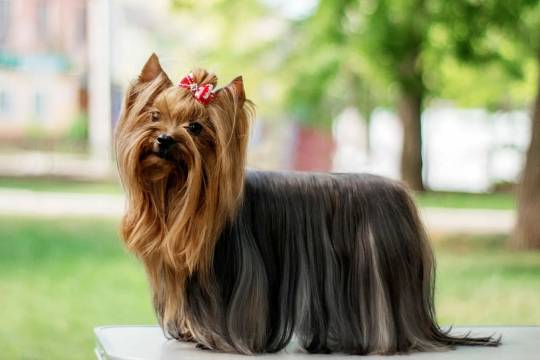
Where it came from and general info
In the 19th century, they were bred in the Yorkshire area of England to be good rat hunters in textile mills. Even though they came from simple backgrounds, their striking looks and lively personalities made them popular as both pets and show dogs. They have left an indelible mark on the dog world with their soft coats and strong personalities.
A Quick Look at Yorkies
Mixed Breed or Original Breed: The Yorkshire Terrier is not a mixed breed; it is an original breed.
Appearance: These small dogs usually weigh between 4 and 7 pounds and are 7 to 8 inches tall at the shoulder.
Their long, silky coats come in shades of blue and tan, and their fine bone structure and confident walk add to their beauty.
Popularity: They are always among the most wanted small dog breeds, and they can live in many different places.
How to Care for a Yorkshire Terrier
Food:
The key to your Yorkie's health is a diet that is balanced and right for him:
Protein: Choose good sources of protein to help your muscles grow.
Healthy Fats: Omega-3 fatty acids help keep skin and fur healthy and shiny.
Complex Carbohydrates: Whole grains and vegetables are good sources of energy.
The setting:
Make your Yorkie's environment safe and comfortable:
They do well inside, so make sure they have a warm place to rest.
Potty training: Regular potty training and walks outside are very important.
Safety: They are fragile, so keep small things and things that could hurt them out of their way.
Pay Attention Method:
To keep a happy and healthy, give daily exercise, mental stimulation, and companionship top priority. Playtime, puzzle toys, and training with positive reinforcement are all good for their health.
How to Get a Yorkie or Adopt One
Places that are popular:
They are popular everywhere, from busy city apartments to quiet homes in the suburbs.
Price on average:
The price of varies a lot depending on things like lineage, the reputation of the breeder, and location. Most of the time, they cost between $1,200 and $3,000.
Group for Adopting a Yorkie:
Online platforms like Facebook and Instagram often have groups for fans, where people can share information and tips about adoption.
Before you buy or adopt a Yorkie, you should:
General Health: Make sure the dog looks healthy, alert, and doesn't have any obvious health problems.
Check the records of vaccinations to make sure they are up-to-date.
Medical History: Find out about any health problems or treatments you've had in the past.
How to Plan for the Life of a Yorkie
Advice: Planning, patience, and love are the most important things.
Care: Have the right food, a good place to live, tools for grooming, and fun toys ready.
The most important things are a comfortable bed, a leash, a collar, grooming supplies, and fun toys.
Common Diseases: They are generally healthy, but they can get problems with their teeth, their trachea, and their knees. Regular trips to the vet are important.
Important Vaccines: Rabies, distemper, and parvovirus are all core vaccines.
Typical name for a Yorkie
Advice: Choose a name that shows who they are and how big they are.
Common Names: Bella, Max, Charlie, Daisy, and Rocky are all well-known names.
In the end, they are charming companions who are known for their style and personality. If you know where they came from, how to care for them, and the answers to the most common questions, you can give them a long, happy life as a valued member of your family.
0 notes
Note
please gush about your passions and pastimes!!! I would love to hear about them
Fat load under cut
Text to speech because there is a dog that is very not happy with the fireworks right now, so there will be no correct grammar. This will be all stream of consciousness you asked for this it’s here it is currently almost midnight, and I just got off of a very hard shift at work so I can’t promise that anything I’m about to say it’s gonna make sense, but you want me to talk about my passions so we’re going to talk about my passions and my past times when I have them sometimes I don’t have them because I have a full-time job and I like to do a lot of things and give myself projects that take up all of my time and leave nothing behind ha ha so the first thing that comes to mind is just general interests so like outside of illustration and drawing write him I said Bubba, Papa Papa ha ha ha ha I really like swimming usually in the lakes because chlorine is bad on my skin. This is too much information but we already did that thing with the peanut butter cup and I feel like eventually that’s going to become like a part of my legacy someday hopefully not but also, I’m gonna own up to the shit that I say anyways back to the lakes I also really enjoyed sand sculpting when I was younger, but I haven’t done it in a long time and since I live near freshwater rather than the coast, we don’t have great sand for like gold thing you know not gold thing sculpting there we go that’s the correct word anyways there is a dog currently sitting on my neck and trying to choke me to death because she is triggered by the Fourth of July fireworks as most dogs are but I love her. She is also one of my passions because she is a cutie patootie and she has these a big old ice, no big old eyes yes, big old eyes. She is licking me everywhere all over my face all over my hands because she is stressed and that is how she expresses her stress and her sister Ruby. The chunky Yorky Yorky is sleeping completely unbothered the reason she is unbothered is because I raised Ruby from a puppy, and when she was just a puppy, I would intentionally play heavy metal around her and really loud music because I had a feeling it would help her when things like this would happen and I was correct, but panda this little scrum Kali of a dog is very very sensitive to new stimuli because she is a rescue. Technically she was rehomed and now we have her so she is three years old and she has lake in her old house. She was kept in a kennel most of the time because it was a breeding house, but it wasn’t very humane so she had never seen snow. She never been outside. She had only gone potty on puppy pads, so it took about a year and a half to train her to pee outside Winter was a very unique experience for her that stressed her out and I think fireworks will always be a trigger for her because she was not raised in a heavy stimuli household like she was, but she wasn’t. She was raised on around a lot of dogs, but she wasn’t taught how to interact with them. She wasn’t socialized with them. She was just caged up. It was really not good so she’s my passion now it’s just making helping her learn how to interact with other animals without having a meltdown and teaching her how to take care of her self a little bit like self, soothing if that makes sense so that when she’s stressed, she’ll be OK when we’re not home, and that was hard because I don’t really know how to teach a dog how to self sooth but she seems to be doing OK now she’s calm down she’s not licking me as much. I turned on the air conditioner so that there’s noise so that seems to be helping her it’s not completely blocking out the fireworks but it’s doing decent, so yeah she’s OK. She’s OK other passions, I was really into like studying genetics when I was in high school like learning how genotypes and phenotypes worked and mostly my curiosity about it just seven from growing up with a mental illness and wanting to figure out how the fuck that Happened and it like in that class actually helped me with excepting myself. I’ve reached the text limit whoops
0 notes
Text
#potty trained yorkies for sale
#yorkie puppies for $500
#teacup yorkies for sale
#teacup yorkie for sale near me
#teacup yorkie for sale up to $400
#yorkies for sale
0 notes
Text
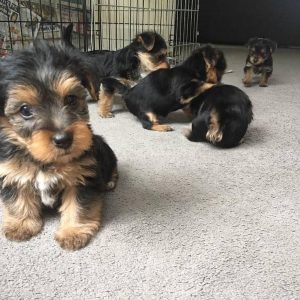
5 Pure Breed 100% Parti Color Toy Yorkies puppies adorable 2 females and 2 males, with registration. They are now 9 weeks and got their shots up ...5 lbs full grown . They are partial potty trained, crate trained and can take solid puppy food. They are playful and friendly with kids and other dogs. Rehoming fee applies.
1 note
·
View note
Text
Pet Training Tips to Help You Train Your Puppies
Introduction
Getting a new puppy is an exciting time for any pet owner. But along with all the excitement, there's also a lot of work to be done in order to train your puppy. There are a lot of different methods for training your puppy, and it can be hard to know where to start. But don't worry, we're here to help. In this blog post, we'll share some of our best pet shop near me training tips to help you get started on the right foot. So if you're looking for some guidance on how to train your new puppy, read on for some helpful tips.
The Different Types of Puppies
Puppies come in all shapes and sizes, which can make choosing the right one seem like a daunting task. But don't worry, we're here to help!
The first thing you need to consider is what size puppy you're looking for. Do you want a small breed that will be easy to carry around, or a larger breed that will be better suited for outdoors activities?
Once you've decided on size, the next step is to choose a breed based on personality. Do you want a laid-back lapdog or an energetic pup who loves to play fetch?
Here are some of the most popular puppy breeds to help get you started:
Small Breeds:
Chihuahua: One of the smallest breeds of dogs, Chihuahuas are known for their big personalities. They're loyal and loving companions that thrive on human interaction.
Yorkshire Terrier: Yorkies are spunky little pups that love to play. They're also very intelligent, making them quick learners when it comes to tricks and obedience training.
Toy Poodle: Toy Poodles are one of the most popular small breed dogs. They're highly intelligent and easily trainable, as well as being low shedding and hypoallergenic.
Shih Tzu: A Shih Tzu is a toy dog that has a long silky coat that requires regular grooming. They make great companion dogs and do well in apartments or
Potty Training Your Puppy
One of the most important things you can do for your new puppy is to start potty training as soon as possible. It may seem like a lot of work, but if you are consistent and patient, potty training your puppy can be a relatively easy process. Here are a few tips to help you get started:
1. Establish a regular bathroom schedule for your puppy. Puppies generally need to go potty every few hours, so take them out regularly, especially after they eat or drink.
2. Choose a designated potty area for your puppy and take them there consistently. If they go in the right spot, be sure to praise them lavishly!
3. Be patient and consistent with your puppy. They will have accidents, but if you are vigilant about taking them out often and praising them when they go in the right spot, they will eventually get the hang of it.
Crate Training Your Puppy
Crate training your puppy can be a great way to help them learn how to behave and stay out of trouble when you're not around. Here are some tips to help you get started:
1. Choose the right crate. There are many different types and sizes of crates available, so it's important to choose one that will be comfortable for your puppy and fit in your home.
2. Start with short periods of time. When first introducing your puppy to the crate, only put them in for short periods of time (10-15 minutes) so they don't get too stressed out.
3. Make it positive. Be sure to praise your puppy when they go into the crate and give them a treat or toy to keep them occupied.
4. Don't use the crate as punishment. Never put your puppy in the crate as a form of punishment, as this will only make them associate it with negative feelings.
Obedience Training Your Puppy
Obedience training your puppy can be a daunting task for new pet parents. However, with a little patience and consistency, you can teach your puppy basic obedience commands such as sit, stay, come, and down. Here are a few tips to help you get started:
1. Start early: Puppies learn best when they are young, so it's important to start training as soon as possible.
2. Be consistent: Dogs respond best to consistent commands and signals. Make sure everyone in the family uses the same words and hand gestures when giving commands.
3. Be positive: Reward your puppy with praise or treats when he or she responds correctly to a command. Avoid using negative reinforcement, such as scolding or punishment, as this can inhibit learning and damage the human-animal bond.
4. Keep it short: Training sessions should be short (5-10 minutes) and fun for both you and your puppy. If your pup is losing interest or getting frustrated, end the session on a positive note and try again later.
Socialising Your Puppy
One of the most important things you can do when you get a new puppy is to socialise dog bakery near me. Socialising your puppy means exposing them to as many different people, animals, and environments as possible so they can learn to be comfortable with new things.
The best time to socialise your puppy is between 8 and 16 weeks old. This is when they are most open to new experiences. After 16 weeks, puppies tend to become more wary of new things.
Here are some tips for socialising your puppy:
1. Take them on walks around the neighbourhood so they can meet new people and see new sights.
2. Enrol them in a puppy class so they can interact with other puppies and learn basic obedience commands.
3. Have friends and family members come over to visit so your puppy can get used to having visitors in the home.
4. Take them to the park or on playdates with other dogs so they can learn how to interact with other animals.
5. Introduce them slowly to new environments, such as the car, the vet's office, or a busy street corner. Let them approach new things at their own pace and give them lots of praise when they do something brave like sniffing a strange dog or exploring a new room in the house.
0 notes
Text
-Teacup and yorkie puppies for sale(24hours service)🏪
-Akc Registered Yorkie Puppies🎖
-Potty trained⚡️ and home trained Puppies (up to date) delivery is available ⚡️
1 note
·
View note
Text
Article-01
What's The Perfect Pet Shop Blog?
This text discusses the pros and cons of various kinds of pet shops in addition to a few suggestions primarily based on what kind of pet shop you might be in search of.
Introduction
There are so many pet outlets out there, it may be hard to decide which one is one of the best to your needs. However, with a bit research, you can discover a weblog that corresponds with your particular pursuits and that will provide you with quality data and recommendation. The following record provides information on a few of the preferred pet shop blogs, in addition to some tips about how to search out the perfect blog for you. Blog Section: Top Pet Shop Blogs 1. The Dog Blogger This blog is dedicated to helping dog house owners keep their pets healthy and completely satisfied. It provides informative articles, suggestions and advice on the whole lot from selecting the best pet food to raising puppies properly. The weblog also has a piece devoted to offering helpful pet shopping ideas. 2. Dog Fancy This weblog is all about canine of all shapes and sizes, from Yorkies to Great Danes. It presents informative articles on subjects similar to dog training, nutrition and grooming. It also has a piece devoted to offering useful pet procuring suggestions. 3. Barking Up The Wrong Tree This blog is aimed at cat homeowners who wish to study extra about their feline associates. It gives
Free Shipping with Minimum Purchase
If you are in search of a pet store that provides free delivery on all orders, look no additional than Big Dog's. This store affords free delivery on any order that totals $seventy five or extra, making it the right vacation spot for budget-minded pet homeowners. Plus, remember to take advantage of their different great offers, together with free pet food with each order and free delivery on select gadgets.
Exclusives
If you're in search of the Loja veterinária weblog, you have come to the best place! Here at the Dog Blog, we set out to find one of the best within the business, and we've got simply the record for you. From informative and instructional blogs to these with a little bit of humor combined in, these are the top 10 best pet store blogs on the market. So with out additional ado, here they're: 10. Dogster: This blog is all about canine breeds and what they're good for. They've a fantastic part on dog coaching in addition to recommendation on all the pieces from choosing the proper canine breed to elevating your pup properly. 9. BarkPost: This weblog is all about dogs and their conduct. They have great recommendations on how to boost your dog correctly and helpfully share articles on subjects like potty training your pup or understanding canine aggression. 8. Happy Tails Pet Hospital: This blog is all about veterinary care for each pets and folks. They've great recommendation on all the pieces from easy methods to take care of your new pet properly to managing sick or injured animals. 7. My Pet Place: This weblog is all about finding the precise pet for you and tailoring their content material particularly to individuals
Guest Post Opportunities
When you personal a pet store, there are quite a few blog alternatives that can be found to you. At the beginning, you must consider blogging about your products and services. You may as well write about the pet neighborhood normally and offer advice for pet owners. Additionally, you may weblog about business trends and share information about new merchandise that you’ve added to your stock. Lastly, you probably have news or events that are related to the pet industry, be happy to share them on your blog.
Strategic Partnerships
A weblog can act as a strategic partnerships tool for pet stores. By partnering with bloggers, pet stores can share precious content material and join with a new viewers. Bloggers also can provide suggestions on products, which can assist shops enhance their choices. To maximize the partnership potential, pet shops should consider these elements: -What topics would you like to see coated? -Who are your goal readers? -What formats will you use (textual content, photos, movies)? -How typically will you post? -What are your expectations by way of content material and protection? Once these questions have been answered, it’s time to determine potential partners. A great place to start is by trying to find related blogs within your business or area. Once you’ve identified a couple of potential companions, attain out and schedule a gathering. In the course of the meeting, introduce your self and talk about the targets of your blog. Make certain to focus on any special content or features that your blog provides. Once you’ve established a mutual understanding, it’s time to get started!
Feedback
When selecting a pet shop, it is important to think about the weblog section as properly. There are many nice pet outlets on the market with informative blogs that help consumers make informed selections. Some of one of the best pet shops have blogs that cowl every little thing from basic pet care advice to particular breeds and kinds of pets. By reading the blog, you may get an idea of what sorts of animals are available and what kind of care they want. Additionally, many pet shops have video blogs that show how one can train your new pet or tips on how to home and care for a particular kind of animal. Watching these movies can give you a head start on taking good care of your new furry buddy.
Conclusion
The very best pet store blog is the one that gives invaluable information for each pet homeowners and pet shop staff. Whether you're a new pet owner or an experienced one, it’s important to have access to helpful recommendation and recommendations on all the things from choosing the right kennel to coaching your canine. An awesome blog may even offer you updates on new merchandise, gross sales occasions, and extra. So in case you are searching for a dependable supply of details about all issues pet related, make certain to take a look at one of the best Pet Shop Blogs on the market!
1 note
·
View note
Text
leash training a puppy | search and rescue puppy training
New Post has been published on https://dogtraining.dknol.com/english/leash-training-a-puppy-search-and-rescue-puppy-training/?utm_source=Tumblr&utm_medium=Tumblr+%230+Freda+K+Pless&utm_campaign=SNAP%2Bfrom%2BBest+Dog+Training
leash training a puppy | search and rescue puppy training
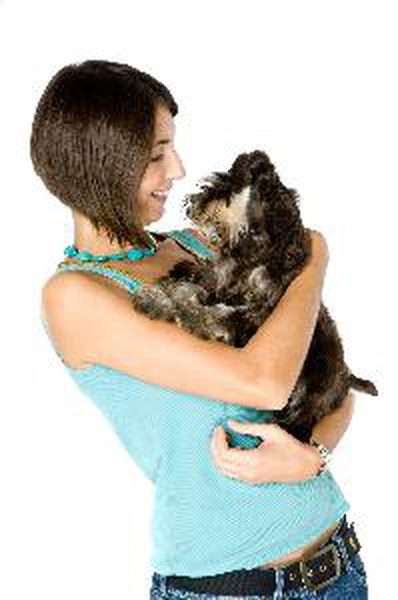
Bernedoodle advanced training: Help!! I can’t get my puppy to stop peeing and pooping in the same spot. What type of cleaner do you suggest? I didn’t think about the smell factor that dogs have. Thank you for the article,
Is cannabis safe for cats? And what sorts of ailments might it treat? When housetraining a puppy, positive feedback is crucial. Letting her know she is doing something that makes you happy is key to encouraging proper bathroom habits. Treats, praise, and playtime are all great ways to show your puppy that she did a good job.
Contact Pavlov Price List FacebookTwitterLinkedInRedditGoogle+TumblrPinterestVkEmail Our Service Commitment Dog Boarding and Training Gahanna Animal Hospital • 144 West Johnstown Road • Gahanna, OH 43230

dog training
puppy training
how to train a puppy
training a puppy
how to potty train a dog
fbq('track', 'ViewContent', content_ids: 'dogtraining.dknol', );
* @namespace TraceKit You want to know the first two thoughts of a new puppy owner?
93443 The key to successfully and swift dog potty training is avoiding mistakes. Labradors are creatures of habit, and if a place is an unfamiliar place to wee, then the dog will not want to wee there.
Should I ever punish my puppies by not giving them a meal? During the housebreaking process, it’s important to reward good behavior with treats or praise, while avoiding displays of frustration or punishment for accidents. If your puppy has already pooped or peed in the house, she won’t understand that you are punishing her for this behavior by the time you find it. However, if you catch her squatting in the house, you can forestall the action by distracting her with exclamations (“Aha!”) long enough to take her outside.
Animal, species, breed, name Media or Speaking Inquiries [email protected]
Breeds with longevity You can praise him and give him a little treat for doing so.
Pet Welfare Advanced Agility Stress & Anxiety Beyond Basics If your dog paid attention, you could finally stop worrying what will happen if she’s left alone too long. You could enjoy having people come over to your home again, without being embarrassed by the dog’s behaviour.
A bowl of fresh water Waste Bags & Dispensers spcaLA offers a FREE behavior helpline to answer your questions on animal training. Just call us at:
Sort ▼ Menu Sponsor an Event LTHQ April 6, 2017 at 11:14 am Save $9.48 (76%) Carrie Nichole (Author) Collar Type
Neoprene (4) Use an extra-long “training lead” to practice recall in public places. Start by giving your dog five feet to roam, and practice calling him back to you for a squeaky toy. Add length until he’s at the end of the lead.
Why sponsor Android MyNorthwest Blog × Canine Influenza vaccine H3N2 Pick your battles
Create Your Account November 14, 2017 12:54 am Winning Your Puppy’s Love, Trust and Respect Waste Disposal A crate can be a good idea for house training your puppy, at least in the short term. It will allow you to keep an eye on him for signs he needs to go and teach him to hold it until you open the crate and let him outside.
Published 6 months ago About us To redirect inappropriate behavior, follow these basic steps: Small food treats for rewards
Jump up ^ Reid 1996, p. 34–35. August 2, 2017 So from 8 to 12 weeks, carry them outside. It won’t be long before they need to do their business because they are simply physically incapable of holding it. After this age try to take them on leash because before long, some dogs will learn not to potty just so they can remain outside. You will want to stop them wandering off and instead concentrating on their business. Maybe even give them time off leash for a few mins in the garden after their business and they will learn to potty more quickly to get that reward.
Reinforce the same obedience behaviors your dog has already learned but move from verbal cues to hand signals. Professor Donaldson will also introduce toggling to help your dog avoid getting stuck in a behavior pattern. x
Petrainer (5) “OK” is a happy-sounding, positive word. It gives permission and your approval./p>
Always seek medical advice if your puppy or dog starts having accidents in the house when they did not before. This could be a sign of an illness.
Cesar Seahawks Tether your puppy to you or a nearby piece of furniture with a six-foot leash if you are not actively training or playing. Watch for signs that your puppy needs to go out. Some signs are obvious, such as barking or scratching at the door, squatting, restlessness, sniffing around or circling. When you see these signs, immediately grab the leash and take them outside to their bathroom spot. If they eliminate, praise them and reward with a treat.
0:18 It’s a very easy method to use, requiring the least effort from you when compared to any other technique. But it does result in more mistakes from your puppy until later in life. So you can be more passive and less involved at first, but will have more cleaning to do later into your puppy’s life compared to other methods.
In 2004 a study was published that was based on the observation of a variety of breeds trained for protection work using shock collars, which showed that although electronically trained dogs can excel as guard dogs, their behavior toward humans and work circumstances changed, often indicating heightened uncertainty and reactivity.[63]
Blue Cross Day six is a status check day while making sure you are maintaining consistency. Your puppy should be making significant progress at this point in his potty training efforts.
Dog Brands Facebook Pinterest Twitter Google+ additional purchase: Facebook group to ask questions and showcase your dogs progress
By Cesar Millan 3:13 Our Books Every thing that I tried in the book did not help The Academy has been in business since 1981. We have had 23,000 clients in our training courses and more than 80,000 dogs have been lovingly cared for in our facility. Many of our clients are on third and fourth generation four-legged family members with us. It is our goal to always maintain that level of trust from our clients and the entire community.
Leash Manners Aspartame Part 5: Accidents Happen: How To Remove Pet Stains And Odors
How do I get my poodle (who is a rescue, about a year old) to not bite and attack my hand when I take a bone from him? Over the years I’ve studied many methods from some of the best trainers in the world. I’ve taken the strongest aspects and approaches from all types of dog training methods, worldwide, to create a modern, balanced, effective-for-every-dog method of obedience training that I call Dog Training Genesis.
2. Start using a crate the day you bring him home. Crate training is the easiest way to teach a dog bladder and bowel control because dogs don’t like to soil their sleeping and eating areas.
Gift of Companionship The things you should write in your diary are: Dog training tips Teaching Your Dog Good Habits GIVE A GIFT (Left) Barking Tips FIND LOST PETS
how to train your puppy | how to train my puppy to stop barking how to train your puppy | how to train my puppy to stay how to train your puppy | puppy training without treats
Legal | Sitemap
0 notes
Text
.
#theres a long story to this#but in short i now have a puppy that i didnt exactly want#not that i dont love him. i really do love him and he is super adorable#but puppies are a lot of work and theyre literal babies#anyway#its been a week and a half and i constantly stressed out by the puppy#and i just have to remind myself to take a moment and take a deep breathe#but im going insane right now#obviously he isnt potty trained while my dog (yorkie) is the poster child of potty trained dogs and i dont need him getting any ideas#he cries all the time#he has daggers for teeth. i now refer to him as baby shark#he hates crate training but it is necessary until he is properly trained because i live in an apartment that is 90% shag carpet#and he terrorizes my yorkie (but my yorkie is adjusting super well so thats good)#and he is chewing on my very expensive dining room table :(#again i love him#but i am so stressed and tired. like ive always broke down sobbing once (on the phone to my boss about being late because of puppy)#so please remember all the work that goes into a puppy before you get one. prime advice#*already broke down
1 note
·
View note